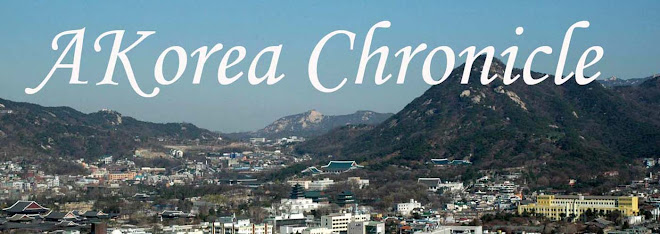
Railbikes..A great way to spend an afternoon
Fresh air.. spectacular scenery..a little exercise...loads of fun. A railbike excursion is a great way to spend an afternoon outside of the busy city life. Railbikes are pedal powered railway vehicles built to run on railroad tracks that are no longer in commercial use.
We decided to check out the railbikes that we had heard so much about. We booked a 1:00 trip and drove early in the morning. We departed at 8:30 a.m. but there was a lot of traffic, so we just made it in time for the trip.
The trip departs from the Gujeolli Station which is located in the picturesque Jeongseon area of the Gangwon-do province. The drive t
 o the station was very enjoyable as we wound out way through the small towns down country roads. It is beautiful scenery and we made the trip as a day trip, but there is a delightful option, you can stay in the Railcar Pension which is a series converted railcars located right at the station. There are Western and Korean style rooms available. (For infornation on this check out the website at the end of this post)
o the station was very enjoyable as we wound out way through the small towns down country roads. It is beautiful scenery and we made the trip as a day trip, but there is a delightful option, you can stay in the Railcar Pension which is a series converted railcars located right at the station. There are Western and Korean style rooms available. (For infornation on this check out the website at the end of this post)This excursion is very popular, especially with families. There were many excited faces as the children awaited their turn to ride the rails. Reservations are a must, especially in the Fall as the trips fill up. As we departed for the 90 minute, 7.2 kilometre trip,the smiles on our faces were just as broad as the youn
 ger participants. It is just plai
ger participants. It is just plai n fun-skipping along the railroad tracks surrounded by spectacular scenery and feeling the cool breezes in your face as you travel along.
n fun-skipping along the railroad tracks surrounded by spectacular scenery and feeling the cool breezes in your face as you travel along.The trip is all downhill so is not the least bit strenuous and you are transported back to the station in a train. On the route you travel along the Crystal clear Soncheon river as it winds its way through a beautiful mountain backdrop. Adding to the beauty of the trip are the waterfalls that you encounter along the way.
 Along the way you encounter tunnels which were a big hit with
Along the way you encounter tunnels which were a big hit withrailbikers young and old. I should point out that the railbikes don't have horns, so if you are given to the pursuit of blowing
your horn loudly in tunnels, you will be disappointed.
A wonderful part of the day was dining in a converted railcar which was fashioned to resemble giant grasshoppers. The food was good and there were Western cuisine options as well as Korean.
Jeonseon was once a large coal-producing region, producing 6.5 million tons a year but due to the decline of the coal industry, mines started closing in 1989 impacting Jeongseon. The train that once transported coal and people between Gujeolli and Auraji stopped operating as a result of this decline. So to preserve this rail road legacy lacals and the Korea Rail Corporationdevised the railcar excursions.
We are so glad they did!
For more information on the railbike excursions contact the following:
the Website of Jeongseon County at http://www.jeongseon.go.kr or call 033-560-2361. You can also contact the KTX Tour and Leisure Corporation at http://www.railbike.co.kr or 033-563-8787.
or go to Korea.net and type in "railbikes" and click on the link. Actually this website has a lot of good information about Korea.
You may need help with booking so I would suggest contacting 1330 or enlisting the help of a Korean friend.
Happy Rails!









